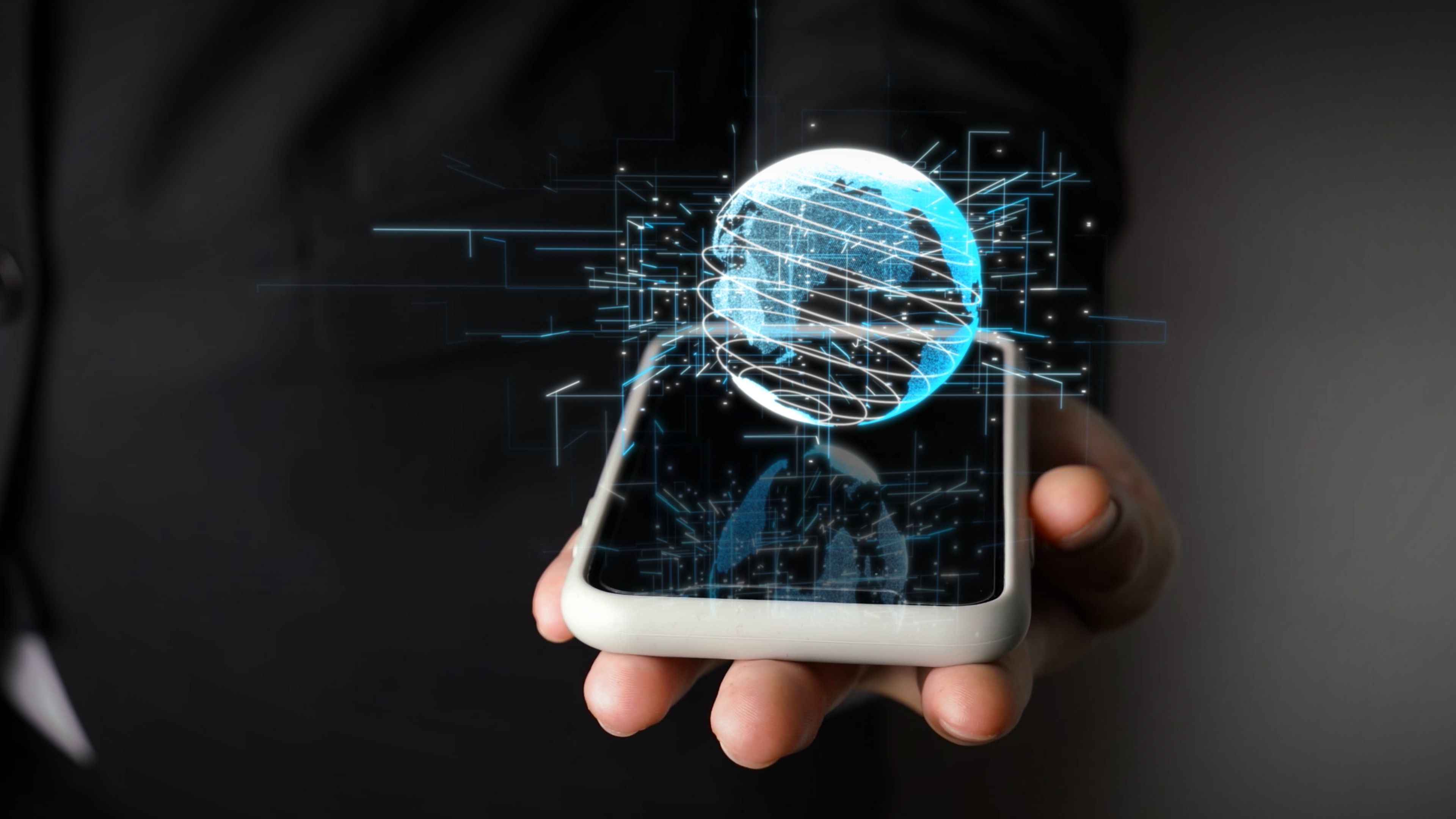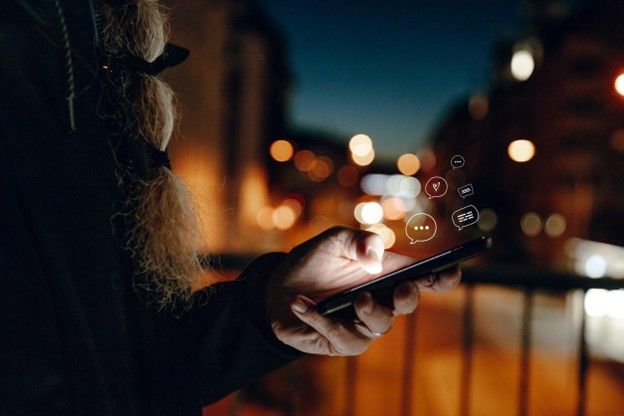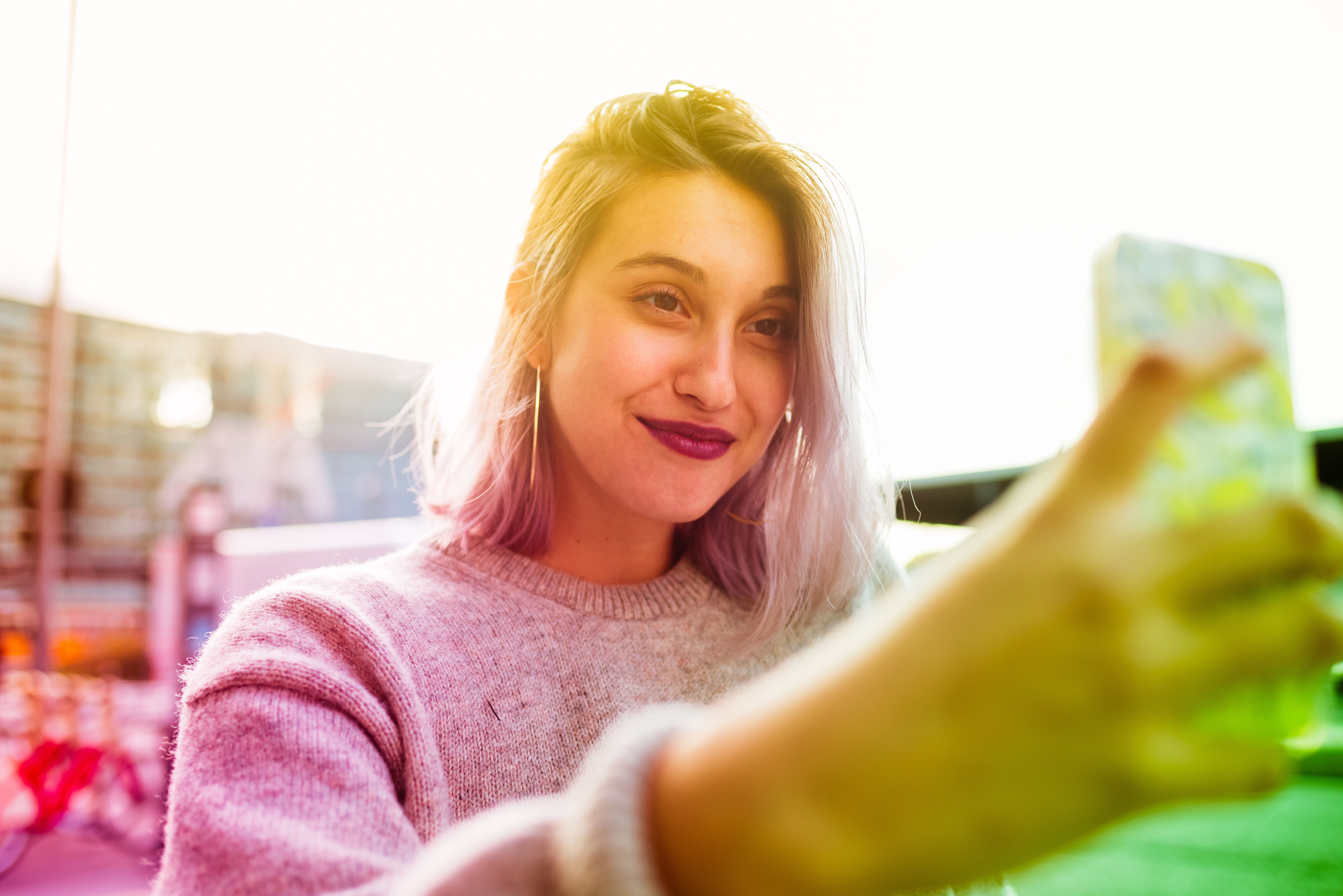Augmented reality is a technology that superimposes computer-generated images on a user's view of the real world. In social media, for instance, AR can be used to provide an enhanced experience for users, by adding special effects to their photos and change how they look.. In this blog post, we will discuss what social AR is; its current applications and benefits in social media for industries, businesses, and marketing, as well as its future.
What is Augmented Reality?
Augmented reality is a technology that combines the physical world with the virtual world. It does this by using a camera to superimpose computer-generated images (such as 3D models or text) into real-world objects. This can create a more immersive experience for the user, allowing him to interact with virtual objects in a real-world environment.
Augmented reality is still a relatively new technology, but it is already being used in several industries. For instance, AR technologies are used in the retail sector, with some stores using them to allow customers to try on clothes without needing to take them off the rack. Hence, this is particularly useful for items such as swimwear and lingerie, where fitting rooms are not always available.
Discover more about how XRKiosk is transforming the In-store customer experience with 3D and AR here.
Perhaps, one of the most common uses of augmented reality is in social media. Facebook, Snapchat, and Instagram have all incorporated augmented reality into their platforms, allowing users to add filters and effects to their photos and videos. This has proved to be a trendy feature, resulting in an increase in platform consumption by users globally.
As industries and companies have been integrating their operations with social media, AR apps are allowing users to share information and immersive experiences with friends and relatives through social media platforms.
Connections Between Augmented Reality and Social Media
Augmented reality has been praised for its potential to revolutionize many different areas, such as advertising, entertainment, education, and healthcare. Social media is not the exception to this truth. Indeed, one of the most significant applications of AR is on social media sites.
For example, Snapchat's popular filters feature uses augmented reality to overlay fun images and animations on users' faces. In contrast, Instagram's AR filters allow users to try on makeup and see how they would look with different hairstyles. Aligned to this trend, in 2019, Facebook announced a partnership with Luxottica to develop Ray-ban AR glasses for consumers to hit the shelves in 2023 or 2024.
Social media users cannot only consume content but also interact with it in a truly immersive way, opening a whole new world of possibilities for how people can connect and share experiences online. Of course, only time will tell what kinds of augmented reality experiences will become popular on social media. Still, one thing is for sure: AR will change how we interact with each other and consume content online.
How Many People are Using Social AR Globally?
Almost all major social media platforms now use augmented reality in their apps. Nonetheless, how many people are currently using AR-powered social media apps?
A study elaborated by eMarketer stated that it expected that 43.7 million people would use social AR at least once per month in 2020. This represents 20.8% of the total population of social media users globally.
Furthermore, most of these users identified themselves as members of Generation Z and Millenials.
History of Social AR
Augmented reality has had a fascinating history on social media platforms. One of the earliest and most famous examples of AR in social media is Snapchat's lenses feature.
Lenses use facial recognition to trigger AR animations, such as transforming users into animals or giving them virtual glasses. While some lenses are for fun, others have been used for marketing purposes, such as when Lens allowed users to "try on" makeup from Sephora.
Facebook and Instagram have jumped on the AR bandwagon with filters like Lenses but not based on facial recognition. Instead, filters can add augmented reality elements to images and videos, such as rainbows or virtual butterflies.
As this technology continues to evolve, we will likely see even more innovative uses for it in social media. Augmented reality has the potential to transform the way we interact with our friends and followers: it will be exciting to see what new immersive experiences are created in the coming years.
8 Unique Applications of AR in Social Media
Social media platforms are leveraging augmented reality technologies to provide innovative and engaging ways for users to interact with brands. Here are eight unique applications of AR in social media platforms and apps:
1. Face filters
Face filters are AR filters that people can use to apply digital elements to their faces in real-time. Generally, face filters track the users' facial features and map them onto a 3D model, which is then added to their faces in real-time.
Augmented reality in face filters has exploded in popularity in recent years, with many social media platforms incorporating immersive technologies into their applications.
In fact, face filters offer a fun and easy way to change your appearance, experiment with different looks, and even add special effects to your photos and videos. This is how augmented reality offers you the opportunity to express yourself.
2. Voice filters
Augmented reality is increasingly being applied to social media in various ways, one of the most popular of which is voice filters.
By using this technology to process and interpret a user's voice, these filters can change the sound of the user's voice in real-time, allowing them to create a wide range of sounds and effects.
3. Animal face filters
In social media, augmented reality has been used to create animal face filters in various ways.
The most popular application is the integration of AR technologies into existing platforms such as Snapchat and Instagram. This allows users to overlay their faces with the faces of animals. This immersive technology has also been utilized to create standalone applications that allow users to take pictures or videos of themselves in animal features.
These AR applications often use automatic facial recognition to apply the animal filters and may also include options for manual control.
In addition to these consumer-facing applications, augmented reality is also being used by businesses to create animal face filters for use in marketing and advertising campaigns. For example, companies can create eye-catching and attention-grabbing ads by overlaying an animal face on a human model.
Lastly, this technology has been applied to scientific research to understand animal behavior. By tracking the movements of animals in augmented reality environments, researchers can gain valuable insights into how they interact with their surroundings.
4. Hand and body filters
Hand and body filters are AR effects that can be applied to photos and videos of people's hands and bodies. These filters can change the appearance of hands and bodies in many ways, including making them look larger or smaller, adding colors, or changing the shape of fingers.
5. Murals, billboards, and posters
Augmented reality is quickly becoming one of the most popular tools for marketing and advertising. By using AR technologies, businesses can create murals, billboards, and posters that come to life when viewed through a smartphone or tablet. Typically, this advertising material is integrated or posted on social media as content.
Moreover, augmented reality allows businesses to create unique and interactive experiences that grab attention and boost engagement. For example, a mural could be augmented with moving images or sound, while a poster could provide more information about a product or service.
Indeed, augmented reality offers a great way to connect with customers on social media. By tagging AR content on social media, businesses can reach a wider audience and encourage customers to interact with their brand.
6. AR Games
AR games have been gaining popularity on social media platforms such as Instagram. These games use augmented reality to superimpose digital content onto the real world, allowing users to interact with the game in a physical space.
Some famous examples of AR games include Pokemon Go, Jurassic World Alive, and Ghostbusters World. These games are entertaining and provide an opportunity for social interaction and exercise.
In addition, they can promote discovery and learn as users explore their surroundings to find virtual creatures or objects.
7. Objects and World mapping
Recently, augmented reality has been applied to social media platforms to place objects or do world mapping. For instance, some platforms now allow users to place digital objects in the real world and share them with others.
This can be used for fun or practical purposes. You can place a dinosaur in your backyard or a furniture piece in your bedroom to see how it looks.
IKEA's revolutionary app shows how furniture will look in your home. This is a massive advantage over traditional shopping methods, which often involve guessing how furniture will look in a home.
IKEA's app also allows customers to share their furniture designs with friends and family on social media, making the shopping experience more interactive and fun.
In addition, augmented reality is also used to create interactive world map experiences. Users can now explore different parts of the world from the comfort of their homes and learn more about the places they visit.
8. Places, landmarks, and portals
Social AR has been applied to places, landmarks, and portals in numerous ways. First, augmented reality is becoming a popular tool for enhancing the visitor experience at museums, tourist destinations, and other public places.
By overlaying digital information in the real-world environment, this technology can provide visitors with a wealth of information about their surroundings.
However, augmented reality is not just a one-way street. Thanks to social media, visitors can share their experiences with others in real-time. If you're exploring a museum and come across an AR display, you can snap a photo and share it on social media for your friends to see.
This way, they can appreciate the same experience even if they're not physically present. Moreover, this can help promote the place a specific user is visiting and motivate others to check it out for themselves.
In addition, augmented reality has the potential to be used for touristic purposes, such as city guides. Social media platforms like Facebook and Snapchat have already begun experimenting with AR-based city guides, allowing users to explore a city in a new and interactive way.
Facebook's "Places" feature allows users to point their phones at a specific location and see information about nearby sights and attractions. Snapchat's "Snap Map" feature serves a similar purpose, allowing users to explore a city through augmented reality.
Takeaway
In a strict sense, social AR can be perceived as the use of augmented reality technologies on social media platforms. Users can use social AR for fun or practical purposes. For instance, users can use AR games on Instagram to have a relaxing time after work or school. Also, users can use social AR to interact with historical places or have a guide in a new city to explore.
Social AR results are promising for industries and businesses. Companies can elaborate on social media strategies to create engaging content based on augmented reality. This can lead to more sales and economic growth.
Vection Technologies is helping companies incorporate** immersive technologies** to foster collaboration and learning and grow sales.
Contact us if you want to start your strategy of adopting augmented reality in your own company.


